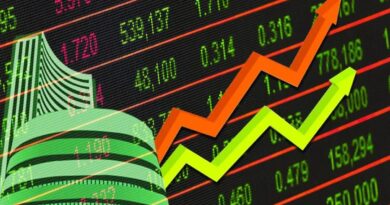What should investors do after Fed’s latest policy call?
The elevated yield curve has definitely tightened financial conditions, its persistence is difficult to gauge. However, the longer the yields remain at current levels, the more adverse will be the case for equities.
Highlights
-
- US Fed stays put to watch the impact of tighter financial conditions
-
- Strong GDP growth but labour market more in balance
-
- Key concern is spike in longer term treasury yields
- Liquidity at margin to shift towards bonds
The US Fed has once again opted to pause, as it continues to assess the lagged effect of the cumulative 525 bps rate hikes and quantitative tightening of more than a trillion dollars on the economy and inflation.
At the same time, better than expected US consumption data in recent times and spike in the longer-term treasury yields have brought in an interesting perspective for the future course.
That said, the Fed appears to be on track towards its goals as it emphasizes “tighter financial and credit conditions to likely weigh on economic activity, hiring, and inflation.” This has helped in easing of US 10-year yields by 15 bps and led to a jump in the S&P 500 by 1 percent.
Where does the US economy stand?
Firstly, Q3 GDP and retail sales numbers were decently ahead of expectations. This was supported by real wage growth and savings from the pandemic period.
At the other end, however, the higher interest rate regime has weighed on investments as well as on the housing sector. The 30-year average mortgage rate has jumped to 7.8 percent – the level which last used to prevail in the 1990s.
Further, though the labour market continues to be tight, it has achieved a better balance. The latest job openings (Non-Farm) data is elevated at 9.6 million, compared to around 7 million just before the pandemic. However, the ratio of job openings to unemployed workers has normalized to 1.5x vs. 2x at its peak. Better balance is also helping in moderation in wage growth.
So, the data is mixed as far as implications for inflation are concerned but largely (except for GDP data) inflation is seen as moderating. The Core PCE index – the inflation metric followed by the Fed— is at 3.7 percent. This is exactly what the Federal Open Market Committee (FOMC) has targeted for 2023-end. However, the glide path to achieve 2 percent is slower as per the Fed’s September projections and targeted for 2026.
What do elevated Treasury yields imply for the US Fed?
The most noticed and commented-upon factor in recent times for Fed is the sharp climb of the US 10 year yield from May 2023 by about 135 bps, thereby turning the yield curve nearly flat. The 10-2 year spread is now minus 15 bps which three months back was more than minus 100 bps.
So, the yield curve which was inverted for about 15 months has flattened out. Historically, this movement across cycles has been a signal for imminent recession.
Chart – US Federal Reserve – Balance sheet reduction

The chief culprits for the yield curve movement have been the “higher for longer” trajectory for the Fed Funds rate in the FOMC projections, strong macro data from the US and the bulky Treasury auctions.
On the one end there have been demand-related factors (consumption/ retail growth/ wage growth) which add to inflation and interest rate concerns, while on the other hand, there has been a huge supply of bonds from both the Fed and the Treasury, causing a demand-supply mismatch. Quantitative tightening – USD 60 billion run off from the Fed’s balance sheet – continues to work in the background post the minor jump in support for the US regional banks last summer.
Further, the US Treasury has recently announced it would borrow nearly USD 1.6 trillion in the next two quarters to fund the budget deficit. The US fiscal deficit is not only elevated compared to the previous cycle, but higher interest cost is also substantially adding to the debt burden.

What should investors do?
The elevated yield curve has definitely tightened financial conditions, its persistence is difficult to gauge. However, the longer the yields remain at current levels, the more adverse will be the case for equities.
Firstly, longer term yields at 5 percent for US Treasuries makes bonds attractive, prompting rotation of money to this asset class. From India’s perspective, a part of the trend may have already started as FIIs have sold ~ Rs 39,000 crore in the last two months – reversing 24 percent of the investment by FIIs in summer (March-Aug ) this year.
Secondly, higher borrowing cost and tighter credit conditions will sap both household consumption and private sector investments. Added to that the pandemic era saving for households is also coming down and therefore the US economy can potentially see a mild recession in CY24. Note that bankruptcies have sharply picked up in the USA.

With this scenario, along with already fragile macros in Europe and China, Indian investors should look at export-oriented opportunities only if valuations are compelling enough.
Given the domestic Indian economy’s resilience, growth stocks with clean balance sheets should be preferred. That said, a recession in the USA and Europe would spill over to the India economy and markets through trade and fund flow channels. And therefore, the accumulation of strong businesses should be staggered.
What may come in handy for investments in India is that it is no longer clubbed with the entire EM bracket. The upgrade of India by some of the global brokerages in the last few months speaks about the strength of the long-term India story.
Bymoneycontrol



